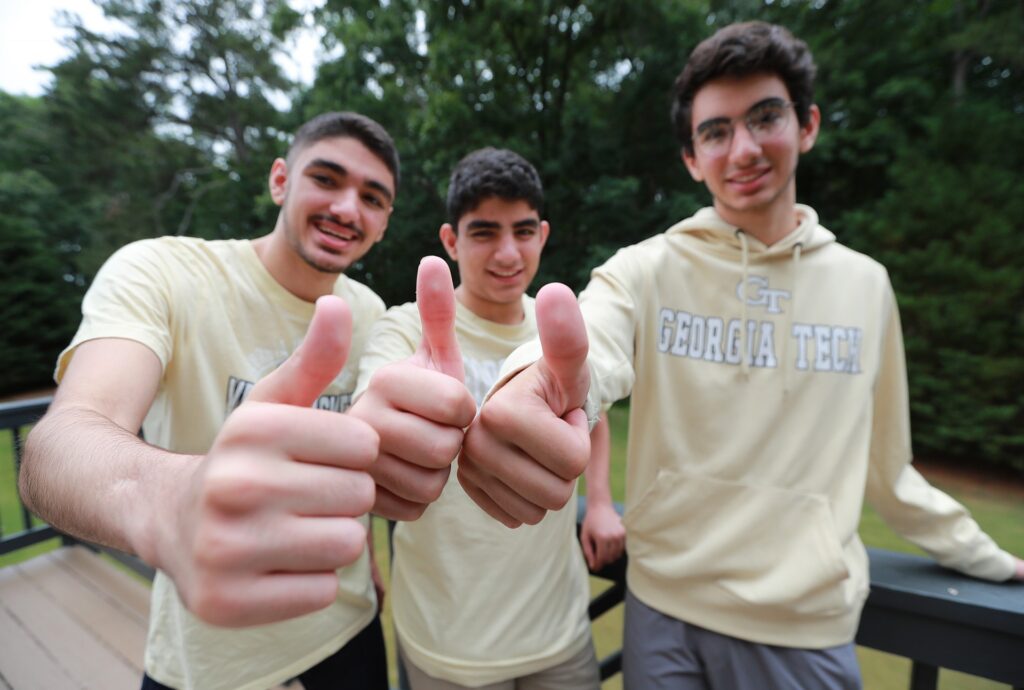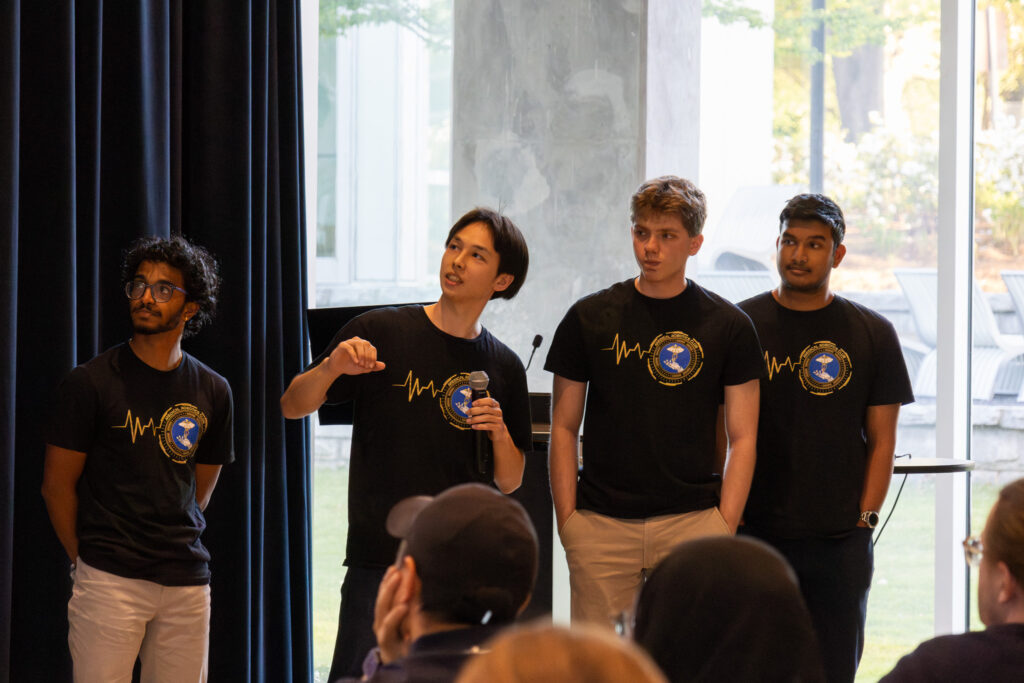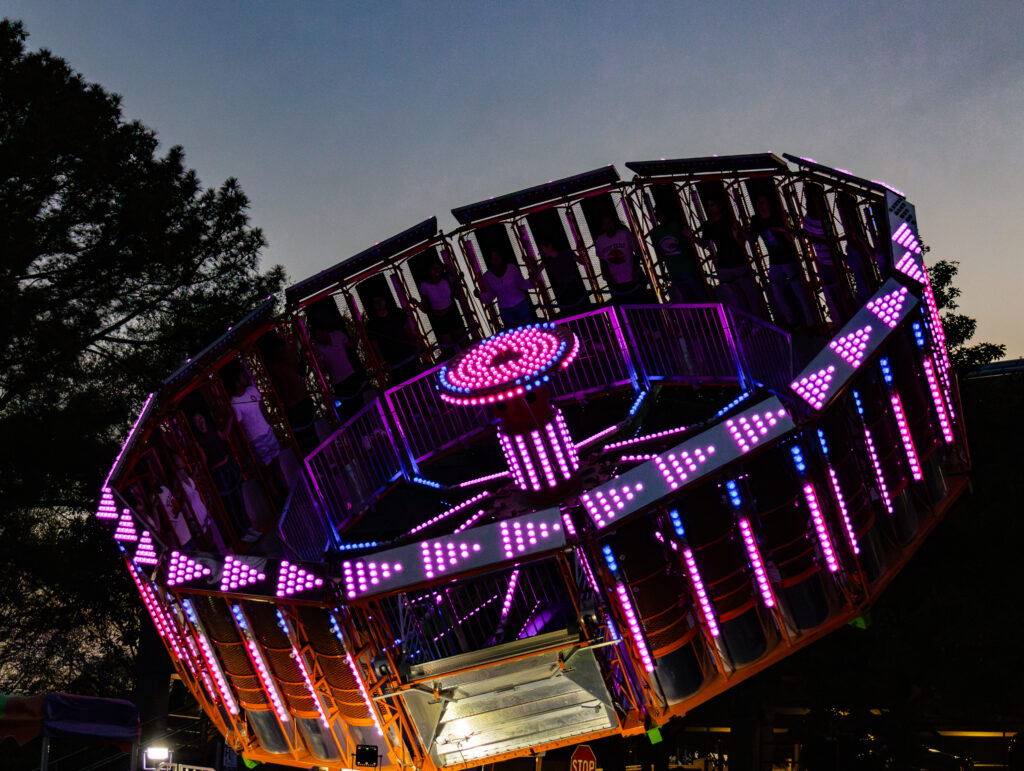
From the bright lights of Gas South Arena to the roaring cheers at Bobby Dodd Stadium, the Kashlan triplets’ journey was never just about crossing stages — it was about launching forward. Once the first-ever co-valedictorians of West Forsyth High School, then neuroscience graduates in Tech’s Class of 2022, the trio is now deep in the effervescent world of research, medicine, impact and innovation.
Adam, Rommi and Zane Kashlan grew up very close as young boys raised by hard-working parents, Judy and Dean Kashlan, EE ‘85. The brothers discovered within their different interests a shared passion for medicine and supporting underserved communities. This shared passion culminated in all three embarking on a journey to medical school, despite their differences in personality and nature.
“[Describing Rommi] I would definitely say [he’s a] visionary…[he’s] the most creative of the three of us. He figures out what to do with his hands and likes to make things. For Zane, I would say logical … we sometimes call him the ‘lawyer’ almost because he likes to put in arguments when we’re having debates,” Adam said, describing himself as curious and bold.
Following in their father’s footsteps, all three brothers embarked on their journey at The Institute in the fall of 2019. As each brother started with different aspirations and potential career paths, they each found their way to medicine through a shared love for helping their community and desire to make a difference.
Starting college at the height of the global COVID-19 pandemic, Rommi’s lab was converted into a COVID-19 testing facility for Tech and Georgia State University students, faculty and staff. There, he helped develop COVID-19 testing kits and volunteered at local clinics, where he tested them and enjoyed seeing the impact he was making on his community firsthand. This experience prompted him to switch from biomedical engineering to neuroscience. Meanwhile, his brother Adam took a different path, blending entrepreneurship with a passion for community service.
“When I arrived at Tech, I was pretty involved in CREATE-X. The mindset of a startup, tech and software to solve the world’s problems [appealed to me]. I also had exposure to medicine just from working with underserved populations. I come from Arab heritage, and in our community, there are lots of refugees … For example, Clarkston, Georgia is one of the biggest refugee hubs in the state, and so I’d go there and be a part of this organization called Refcode where I’d help teach refugees how to code and learn software,” Adam remarked on helping refugees new to America acquire skills necessary for securing jobs to provide for their family.
Zane, however, took yet another route, becoming heavily involved as a team leader for a GT 1000 course, helping first-year students successfully transition into life at Tech. During his undergraduate years, he also served as a student ambassador and teaching assistant, where he discovered a love for learning about students, their learning styles, struggles and backgrounds.
“[As an ambassador] I got to recruit new students, and I was an Anatomy teaching assistant, so I really enjoy just teaching and learning. [I enjoy] learning why this student maybe struggles here, and what, historically in their background, is making something challenging. I like going into medicine just because we can connect with people, connect with their stories,” Zane said, expressing his passion for mentorship and hinting at potential for a career in academic medicine.
Whether involved in research, cultivating the learning experience of the student body or taking full advantage of Tech’s plethora of student organizations, the Kashlan brothers made the most of their short but indelible time as undergraduates, noting a few people who were integral and influential to their journey.
“Dr. Christina Ragan in the neuroscience department was extremely instrumental to me moving on to my gap years in research and even being in medical school. Dr. Adam Decker, I think we can all relate to, [he’s a] wonderful human being … [Anatomy is] an unapproachable sort of subject, [but] he makes it really fun. And I’ll say … our president, Dr. Ángel Cabrera, … has this culture to push students forward in Georgia Tech and to be their biggest advocate,” Rommi said.
With all three brothers focused on “getting the medicine down,” Rommi and Adam currently attend Emory University’s School of Medicine, while Zane will be starting his medical journey this year at the University of Michigan on a full-ride scholarship. However, the thought of where they’d like to see themselves in 10 years is a blank canvas. While they agree that being a clinician is important — and that they plan on spending a substantial amount of their career practicing — they are not limiting themselves.
Whether involved in academia, conducting research in targeted immunotherapies or navigating strategies in policy and startups to apply technology to healthcare, as long as the Kashlan brothers are making a positive impact on their community every day, they are content and fulfilled.
“I’ll say there’s no right path to navigating your early life or your life in general. It’s what you make of it, and you get out of it what you put into it. There’s a breadth of opportunity [at Tech], and really the world is your oyster. I think my brothers and I sort of showed that there are different paths there and you can make your future how you want it to be,” Rommi said.
The importance of making your own journey was clear to the brothers as they navigated the time spent during their gap years: Adam and Rommi working at the Woolf lab and Massachusetts General Hospital, respectively, both associated with Harvard Medical School and Zane interning at both the Carter Center and Yale School of Medicine.
“I think it’s important for students to realize that if you keep trying to set arbitrary goals and think ‘Yeah, I’ll be happy in four or six or eight years,’ you’ll just keep setting goals once you get to the next checkpoint, so it’s [important] for students to enjoy what they do, and make sure you have like hobbies or things you genuinely enjoy,” Zane said sharing Adam’s sentiment on the importance of following your passion, a lesson he learned from his father.
Despite their impressive achievements and natural drive as Jackets, Zane, Rommi and Adam remain defined not by ambition alone, but by empathy, thoughtful humility and an unwavering sense of purpose.
The post The Kashlan triplets share their insight and inspiration appeared first on Technique.


